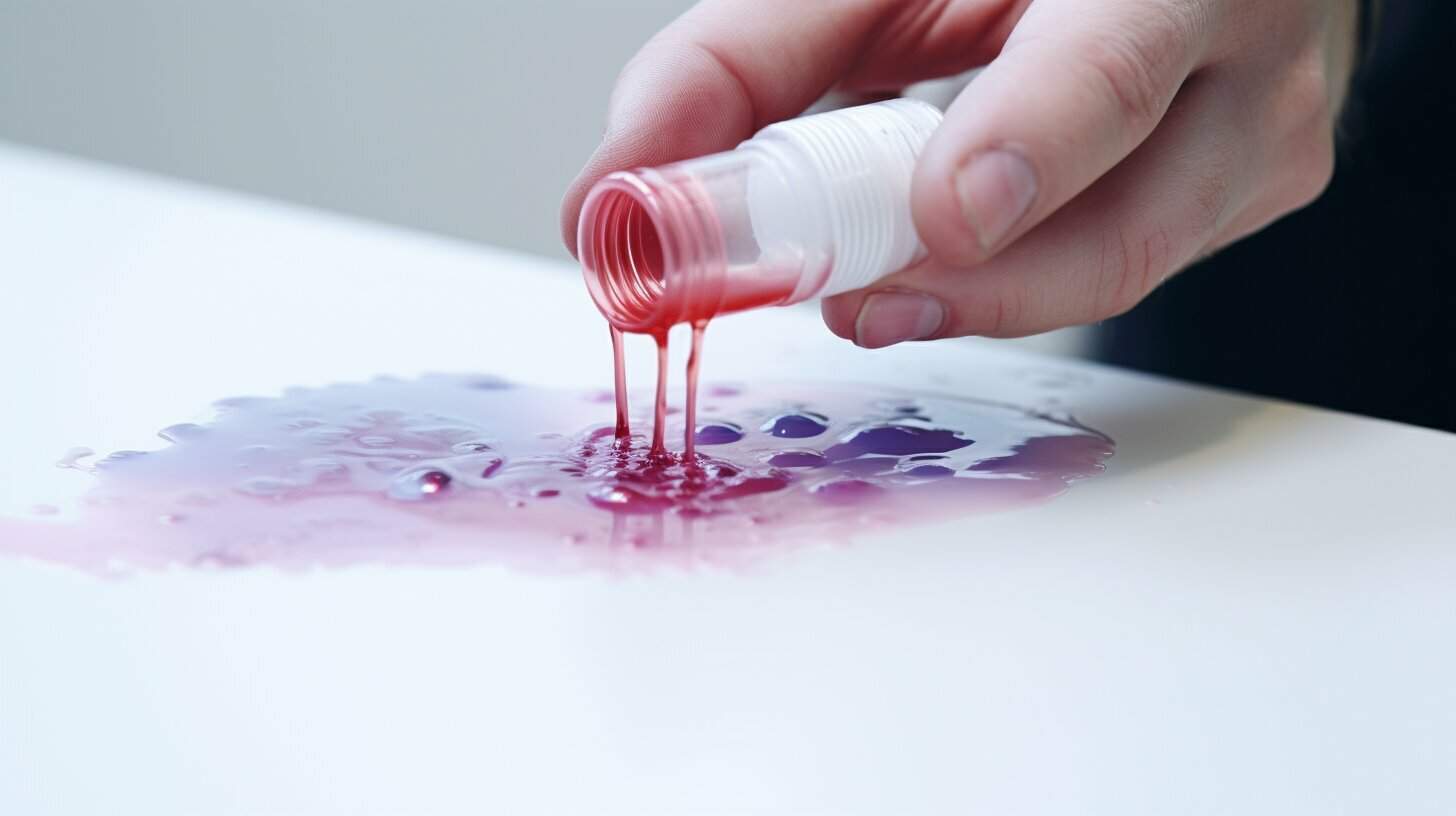Beards have been an enduring symbol of masculinity and style for centuries. From the distinguished look of ancient Greek philosophers to the rugged charm of Hollywood heartthrobs, beards have always commanded attention. While the length and shape of a beard often steal the spotlight, its thickness is equally important in creating a bold and robust appearance.
Thick beards exude an air of authority, confidence, and even virility. However, not everyone desires or suits a thick beard.
Some individuals might prefer a sleeker, more refined look or feel overwhelmed by excessive hair growth on their faces. In this article, we will delve into the fascinating world of beards and explore whether it is possible to reduce their thickness.
Contents
- 1 The Fascination with Beards and Their Thickness
- 2 The Role of Hormones in Beard Growth
- 3 Different Phases of Beard Growth Cycle
- 4 Factors Influencing Beard Thickness
- 5 Regular Grooming Practices for a Neater Appearance
- 6 Trimming Techniques to Control Length and Volume
- 7 Brushing and Combing to Distribute Natural Oils Evenly
- 8 Lifestyle Modifications for Thinner Beards
- 9 Cosmetic Options for Thinning Beards
- 10 Professional Interventions for Thicker Beards
- 11 Conclusion
The Fascination with Beards and Their Thickness
The allure of beards cannot be denied; they possess an almost magical ability to transform one’s appearance. The thickness of a beard has long been associated with masculinity and ruggedness. A full, luscious beard can make a man stand out in a crowd, commanding attention wherever he goes.
It symbolizes maturity, wisdom, and strength – qualities that many aspire to embody. However, it’s important to recognize that societal beauty standards vary across cultures and time periods.
While thick beards are currently in vogue in many parts of the world, personal preferences may differ widely among individuals. Some may find themselves yearning for a more tailored aesthetic or simply feel overwhelmed by the maintenance required to keep a dense beard looking sharp.
Exploring the Possibility of Reducing Beard Thickness
If you find yourself grappling with an unruly mane atop your face or desiring a trimmer appearance without sacrificing your facial hair entirely, you may wonder if there are ways to reduce the thickness of your beard without resorting to complete removal. The good news is, there are various methods and techniques you can explore to achieve the desired result. From natural remedies to cosmetic options and professional interventions, the path to a thinner beard is paved with possibilities.
However, before we embark on this journey, it’s essential to understand that every individual’s hair growth patterns and genetics play a significant role in determining beard thickness. While some may have naturally sparse facial hair, others may have inherited a resplendent mane from their ancestors.
Therefore, it’s crucial to manage expectations and remember that not all techniques may yield the same results for everyone. With that said, let us now dive deeper into the world of beards and discover the fascinating ways in which we can potentially reduce their thickness.
The Role of Hormones in Beard Growth
Unlocking the Secrets Behind the Lusciousness
When it comes to understanding the growth of your glorious beard, hormones play a pivotal role. Testosterone, often referred to as the “manly hormone,” takes center stage in this grand performance. This powerful hormone is responsible for kickstarting and fueling the growth of your facial hair.
It stimulates the hair follicles on your face, encouraging them to sprout those manly whiskers. But testosterone alone isn’t enough to transform you into a bearded wonder.
Another hormone called dihydrotestosterone (DHT) steps in to add its magic touch. DHT is derived from testosterone and is responsible for transforming those fine vellus hairs that usually cover your face into robust terminal hairs that make up an impressive beard.
Different Phases of Beard Growth Cycle
A Journey from Bare-Faced to Majestic Mane
Just like life itself, beard growth goes through various stages. Understanding these phases helps us appreciate our beards’ journey and anticipate what lies ahead.
- The Anagen Phase: This is where it all begins—the growth phase when those tiny hairs start sprouting on your face. It typically lasts between two and six years, determining how long your beard can potentially grow.
- The Catagen Phase: After an extended period of growth, your beard hairs enter a transitional phase known as catagen. During this brief period (around two weeks), hair follicles shrink and detach from their blood supply, preparing for their eventual shed.
- The Telogen Phase: Ahh, the resting phase! Your facial hair takes a break during this stage that lasts roughly one to four months.
Don’t worry; it’s just temporary downtime before they start growing again. 4. The Exogen Phase: Say hello to the shedding phase!
In this stage, older hairs are pushed out by new growth. It might be disheartening to see hair falling out, but fret not; this is a natural part of the cycle.
Understanding these phases helps us recognize that growing a beard is indeed a journey. Patience and care are essential as we navigate through each stage, nurturing our beloved beard to its fullest potential.

Factors Influencing Beard Thickness
Genetic Predisposition and Hereditary Factors
Unlocking the Secrets of Beard DNA When it comes to beard thickness, your genetic makeup plays a significant role.
Just like the color of your eyes or the shape of your nose, your beard thickness is largely determined by your genes. If you come from a lineage of men with thick, luscious beards, chances are you’ve inherited that trait too.
On the other hand, if your grandfather and father struggle to grow a full beard, you might likely face similar challenges. Researchers have identified specific genes associated with beard growth and thickness.
These genes control key processes in hair follicle development and strength. So even if you try every trick in the book to enhance your beard’s thickness, genetics will always be a powerful force shaping the outcome.
Age and Hormonal Changes Affecting Beard Density
The Dynamics of Facial Foliage Over Time As men age, their hormone levels fluctuate, leading to changes in beard growth patterns. During puberty, testosterone levels skyrocket for young men, stimulating facial hair growth and creating new thick strands where once there were mere patches.
However, as time passes and men enter their middle-aged years or beyond, hormonal shifts can result in decreased testosterone production. This decline often leads to thinner facial hair or even sparsity in some areas.
Moreover, along with testosterone fluctuations, dihydrotestosterone (DHT), another hormone derived from testosterone through an enzymatic process within the body called 5-alpha-reductase conversion plays a vital role in determining beard density. DHT binds to receptors present within hair follicles on various parts of our body including our face which then influences whether those follicles will produce thick terminal hairs or thin vellus hairs.
While age may bring changes to the thickness of your beard, it’s important to remember that genetics still take center stage. A combination of genetic predisposition and hormonal factors will determine the ultimate thickness of your facial hair.
Don’t despair, though, as there are methods to enhance your beard’s appearance and work with what you have. By understanding these factors influencing beard thickness, we can approach the question of reducing beard thickness with a clearer perspective.
Genetic predisposition sets a foundation for our facial hair tendencies, while age and hormonal changes play a supporting role in shaping our beards over time. Now that we’ve explored these influences at play let’s dive into natural ways to manage your beard’s thickness for a neater appearance
Regular Grooming Practices for a Neater Appearance
Unleash the Barber Within
When it comes to taming a beastly beard, regular grooming practices are your secret weapon. To achieve a neater appearance and reduce thickness, you must become comfortable with the art of trimming. Invest in a high-quality pair of barber-grade scissors or an electric trimmer to take control of your facial follicles.
Start by trimming your beard to an even length that suits your style and desired thickness. Remember, precision is key!
Take your time to carefully shape and define the lines along your jawline and neckline for maximum impact. By engaging in consistent grooming rituals, you can effectively manage the length and volume of your majestic mane.
Trimming Techniques to Control Length and Volume
The Artistry of Precision
Now that you have embraced the importance of regular grooming, let’s delve into some trimming techniques that will help you conquer unruly beard thickness. When aiming for a thinner appearance, focus on removing excess bulk by selectively trimming longer hairs while leaving shorter ones untouched. Gradually tapering the length towards the bottom will create a more polished look while reducing overall density.
Employing different comb attachments with your trimmer can provide greater control over how much hair is removed, allowing precise adjustments according to individual preferences. Don’t be afraid to experiment with various cutting angles and techniques until you achieve the desired effect.
Brushing and Combing to Distribute Natural Oils Evenly
The Power of Pristine Oils
Beyond merely wielding scissors or trimmers, brushing and combing play pivotal roles in maintaining a well-groomed beard while managing its thickness. Regular brushing helps distribute natural oils produced by your skin throughout the entirety of your facial hair. This not only promotes a healthy shine but also prevents excessive oil build-up, which can lead to clumping and an overly dense appearance.
Opt for a high-quality boar bristle brush or a wide-toothed comb to effectively detangle and evenly distribute these precious oils. Comb through your beard gently, starting from the roots and working your way down to the ends.
By consistently incorporating this ritual into your grooming routine, you’ll achieve a softer, more manageable beard while keeping its thickness in check. With these natural grooming techniques at your disposal, you’re well on your way to mastering the art of reducing beard thickness.
Remember, patience and consistency are key when embarking on this hairy journey. Stay tuned as we explore lifestyle modifications and cosmetic options that further unlock the secrets to achieving the beard of your dreams!

Lifestyle Modifications for Thinner Beards
Diet and Nutrition for Optimal Hair Health
Nourishing Your Way to a Thinner Beard When it comes to achieving a thinner beard, incorporating certain dietary habits can make a noticeable difference.
Consuming specific foods rich in biotin, vitamins, and minerals can promote hair growth and enhance the overall health of your facial hair. Include biotin-rich foods like eggs, nuts, and avocados in your diet as they are known to strengthen hair follicles.
Additionally, incorporate fruits such as berries and citrus fruits that are packed with vitamin C, crucial for collagen production which aids in healthy hair growth. Don’t forget to add leafy greens like spinach or kale which provide essential vitamins like A and E that nourish the hair follicles from within.
Hydration Importance for Overall Hair Vitality
Quenching Your Way to Beard Brilliance Maintaining proper hydration is not only vital for overall health but also plays a role in achieving a thinner beard. Water is essential for maintaining hair elasticity and preventing dehydration of both the skin beneath the beard and the beard itself.
Aim to drink at least 8 glasses of water per day to ensure optimal hydration levels. Additionally, consider using hydrating beard products such as moisturizing oils or balms that contain ingredients like jojoba oil or shea butter to lock in moisture and keep your beard looking its best.
Cosmetic Options for Thinning Beards
Using Specialized Beard Products
Enhancing Your Facial Foliage When it comes to managing your beard’s thickness, utilizing specialized products can make all the difference.
Beard oils are excellent options for softening unruly hair while also providing moisture and nourishment to the skin beneath. Look for beard oils containing natural ingredients like argan oil or coconut oil, as they have proven benefits for hair health.
Additionally, styling balms or waxes can help you achieve better manageability by taming stray hairs and providing a more refined appearance. These products often come in various scents, allowing you to personalize your grooming routine while maintaining a thinner beard.
Professional Interventions for Thicker Beards
Seeking Professional Assistance
When Expertise is Worth It If lifestyle modifications and cosmetic products aren’t achieving the desired results, it may be worth considering professional interventions for thicker beards. Consulting with a dermatologist or trichologist who specializes in hair-related issues can provide valuable insights and potential solutions tailored to your unique situation.
They may recommend treatments such as microneedling, platelet-rich plasma therapy, or laser procedures that can stimulate hair growth or reduce thickness over time. Remember to thoroughly research professionals before seeking their services.
Conclusion
In the quest for achieving a thinner beard, it’s essential to embrace both lifestyle modifications and cosmetic options that suit your preferences. By incorporating biotin-rich foods, hydrating adequately, and utilizing specialized beard products, you can enhance the overall appearance of your facial hair while maintaining control over thickness. However, if these methods don’t yield satisfactory results, seeking professional assistance from experts in hair care could offer additional solutions.
Remember that each individual’s journey is unique; patience and consistency are key throughout this process. Embrace your beard-growing experience with confidence, knowing that you have taken steps towards achieving a thinner beard that suits your desired style
Amazon and the Amazon logo are trademarks of Amazon.com, Inc, or its affiliates.





Leave a Reply